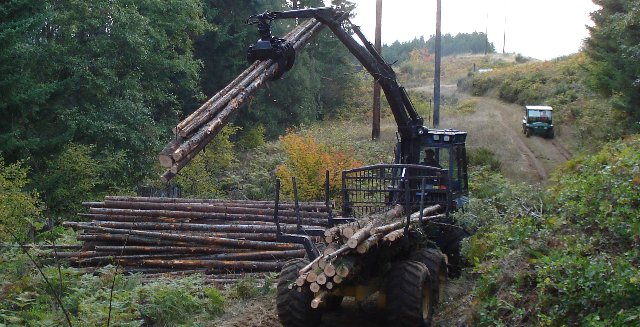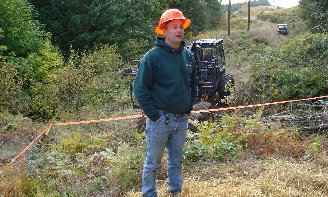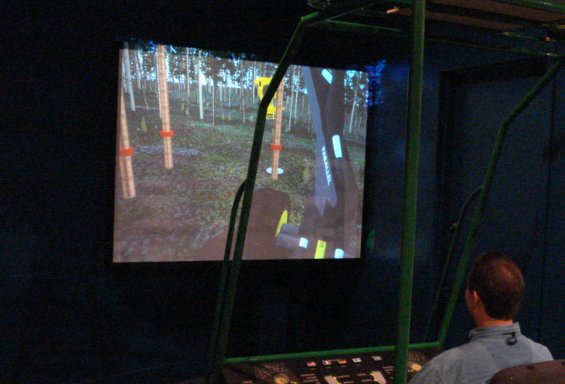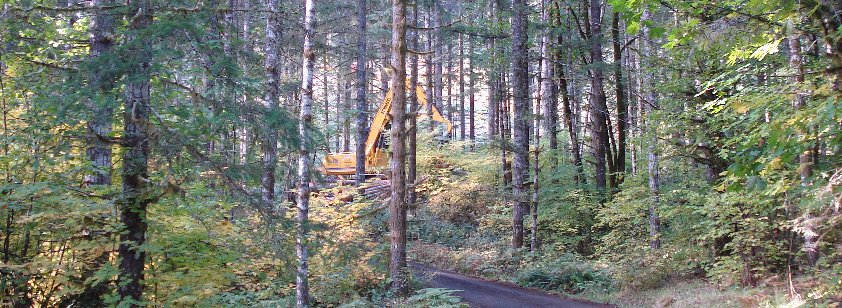This is my last entry re my tree farm convention. I know I have put out a lot about that, but there was a lot to say.
Below is a forwarder at work. It is owner operated, so the guy has to work hard. That vehicle costs $250,000, but allows one man to do the work of dozens.

On our field day to the Beaver Creek Tree Farm I saw lots of interesting aspects of forestry. I noticed the differences between forestry in the Northeast and in the South. The South is ahead of other regions in the practice of silvaculture and marketing total life cycle of wood.
Below is the owner-operator explaining the economics of his business. He started working on his own land, but soon found that he could make money working on other people’s land too. It helped him defray the cost of the equipment.

I think that is because the Northeast was TOO blessed by nature and the Federal government. Most of the timber harvested in the NW came from Federal lands until the spotted owl controversy. Logging in the region was much more reminiscent of the traditional logging of the 19th Century than of the type of tree farming we do now. In many ways, the old practices were more like hunter gatherers, whereas tree farming of today is more like settled agriculture.
Below the guy up above told us that he has trouble finding people with the skills to run his equipment, but mentioned that kids who play a lot of video games are good candidates. The skills they learn playing games is transferable to the 3D work in the forests. This is an actual forestry video game at the Museum of Forestry in Portland.

The South has a good climate and ecological situation for growing trees, especially pine trees, but it took more work and planning to make the land productive. Most of the South’s forests are growing on former farm fields where the soil was exhausted by over cropping of cotton or tobacco. Many were converted to forests around the time of the great depression and we are on our third generation. Our soils do not have the “A” level of top soil in most cases. We are rebuilding our soils, but it will take another generation or more to restore something like there was before the abuse. On the plus side, most of the Southern forests are on rolling hills or flat areas. It is very easy to run mechanized forestry operations in the South and many of the techniques and machines themselves were developed for Southern forests or with Southern forests in mind. The South also has lots of saw mills to process the wood. The South is truly America’s wood basket, supplying around 58% of the total wood used in the U.S.
Below – mechanized forestry can be done in the NW too.

Logging in the Northwest is sometimes more heroic because they have to work in difficult mountain conditions. For example, they often have to use cables to pull logs up hills for loading. On Southern tree farms it is often possible for the wood to be loaded directly onto trucks. Most Southern tree farms are also closer to paved roads.
Below is the Willamette (pronounced wɨˈlæmɨt) River in Portland. Mt Hood is in the background but hard to see.

The economy of forest production is better in the South than the Northwest as that region’s earlier advantage in access to standing Federal-owned timber has disappeared. Trees grow fast in both regions. My guess is that a natural forest would grow faster in the NW, but tree farms are more productive in the South because of better developed silvaculture techniques and topography that is easier to work with. I don’t know for sure, but it also seemed to me that Oregon had more onerous regulations than Virginia. But all that aside, forestry is more similar in the regions than different and as forestry in the Northwest shifts from publicly owned forests to private tree farms, the similarities will grow. Forests in the Northwest are beautiful and the Douglas fir & its relatives are majestic. The trees tend to be bigger there than in the South, and I would like to spend more time learning about the ecology of the NW forests, but I enjoy the forests wherever they are. They all have their particular beauty.
